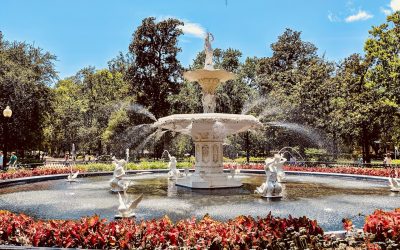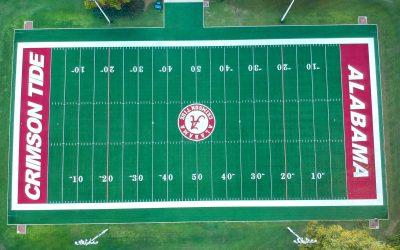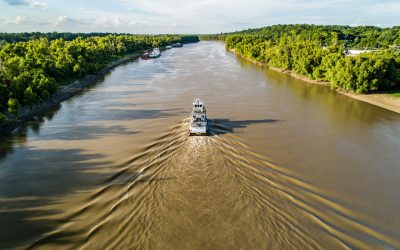All About Louisiana: A State Filled with History, Jazz & Gators
Louisiana is world famous for so many things… don’t worry, we’re about to share why!
New Orleans, the state’s biggest city, is known as the birthplace of jazz. People from all over the world come here for Mardi Gras, an annual festival or carnival featuring crazy and colorful costumes, parades, music, and dance. Likewise, some of the state’s historical sites are in the French Quarter, the oldest neighborhood in New Orleans, which dates back to 1718.
The state is also a little spooky since it claims to have the most haunted city in the country. It also supports a local group called the New Orleans Vampire Association!
Louisiana is bordered by the Gulf of Mexico to the south and east; Arkansas to the north; Mississippi to the east; and Texas to the west.
Louisiana has three geographic regions:
- East Gulf Coastal Plain: This low land is east of the Mississippi River. It’s marshy near the river and hilly in the north.
- Mississippi Alluvial Plain: This area runs west of the Mississippi River from Arkansas to the north down to the Gulf of Mexico. Wetlands cover the southern coastline. Ridges topped by fields called front lands run along the river, and fields called backlands (with very fertile silt and clay) slope away.
- West Gulf Coastal Plain: This region is the farthest west, which runs from Arkansas to the most southern part of the state. In the north, it features Louisiana’s highest point, Driskill Mountain. Heading south, you’ll find prairie, marshland and barrier beaches (sandy islands that border the coastline).
What really happened
- People first arrived in this area around 12,000 years ago. During its history, Native American tribes, including the Atakapa, Choctaw, and Chitmacha, lived on the land.
- In 1541, explorer Hernando de Soto claimed the territory for Spain. Its governmental units were originally parishes, or church units, set up by the Spanish in the late 1600s. Then France gained control of the region in 1682 and named it after France’s King Louis XIV. For more than 100 years, ownership of the land kept changing between these countries.
- After New Orleans was founded in 1718, many African people were brought to the city as slaves. To this day, the mixture of African, French and Spanish people have influenced the local culture.
- During the American Revolution (1775-1783), a battle between the Spanish and the British also took place along the Mississippi River at a city called Baton Rouge. Bernardo de Galvez and his troops from the Spanish colony defeated the British. It was the only American Revolutionary battle that occurred outside the 13 colonies.
- In 1803, the United States bought this area from France as part of the Louisiana Purchase.
- Louisiana joined the Union in 1812 as the 18th
- When the Civil War began in 1861, Louisiana seceded (left) the Union and joined the Confederacy. However, it rejoined in 1868, three years after the war ended.
- Baton Rouge served as the state capital from 1849 to 1862. But after Union troops attacked the city during the Civil War, the government was forced to leave. Several cities served as the capital until 1882, when Baton Rouge once again became the seat of the government.
- Before the Civil War, Americans from the east settled in New Orleans and other parts of the state. Thousands of immigrants from the West Indies, Germany and Ireland also came to live in New Orleans. The city grew and became the main trading center of the western United States.
- Louisiana lost control of the mouth of the Mississippi River in 1862 when a Union fleet captured New Orleans and Baton Rouge.
- During the Reconstruction Era (after the Civil War), the country had to find ways to integrate millions of African Americans, who were once slaves and now free, into society. Former Confederates, however, controlled the state’s government and introduced policies that discriminated against them so the US government introduced military rule on Louisiana and other southern states until new policies became law. After a new state constitution was written that protected the rights of Black Americans, Louisiana was readmitted to the Union in 1868.
Stuff you should know
- The land along Louisiana’s coastline is quickly disappearing. Louisiana has lost 2,000 square miles of land since the 1930s. By 2050, scientists predict that New Orleans may be What do you think?
- Many pelicans used to live along the state’s gulf coast, which is why Louisiana is nicknamed the Pelican State. The Pelican is also the state’s official bird and appears on the state flag.
- It’s the only state that’s divided into parishes (64 of them, to be exact). Parishes are similar to counties.
- The chief river in the state is the Mississippi River. In 1812, the New Orleans steamboat made the first trip downriver from Pittsburgh, Pennsylvania to New Orleans by way of the Ohio and Mississippi R The Mississippi River runs through New Orleans and into the Gulf of Mexico along the state’s southeast coast.
- The Bayou Bartholomew is the longest bayou in the world, which is a slow-moving creek or swampy section of a river or lake. It stretches across both Arkansas and Louisiana, is more than 300 miles long, and boasts more than 100 different types of fish!
Funny, crazy or just plain weird
- Cemeteries in New Orleans are above the ground. Since the city is built on wet, swampy land, the water table is high. That means if you dig just a few feet, you’ll hit water. Graves become soggy and caskets could float away during floods. That’s why people are laid to rest above the ground in tombs.
- New Orleans may also have more haunted hotels than any other city in the country – fifteen, to be exact! Many were built in the 1700s and claim to have had ghosts as guests for centuries. Have you ever seen a ghost?
- Voodoo, a religion that uses ancestors and spirits to influence life events, is practiced in New Orleans. The Voodoo Spiritual Temple is New Orleans’ only formally established voodoo temple.
Tell me more
- Louisiana is one of two states that has the largest population of alligators, which many find to be very scary-looking creatures! Can you guess the other state? Head three states east and then go south. (It’s Florida.)
- The country’s first indoor, seated movie theater opened in New Orleans in 1896.
- One of the state’s most popular dishes is jambalaya. It typically includes pork or chicken; as well as shrimp, crab, crawfish and andouille (smoked sausage) that are cooked with vegetables, stock and rice.
- More than 40,000 Cajuns live in Louisiana, more than in any other state. In the 18th century, Cajuns, who were Roman Catholic French Canadians, were driven out of their home by the British. Their home was the colony of Acadia, which is now Nova Scotia. Their descendants settled in southern Louisiana.
Know some haunted stories about Louisiana? If not, share something interesting about the state’s history or geography. Email it to us at info@adventuresofmo.com along with your first name, age, and state where you live and we’ll post it on Mo’s social media pages!







